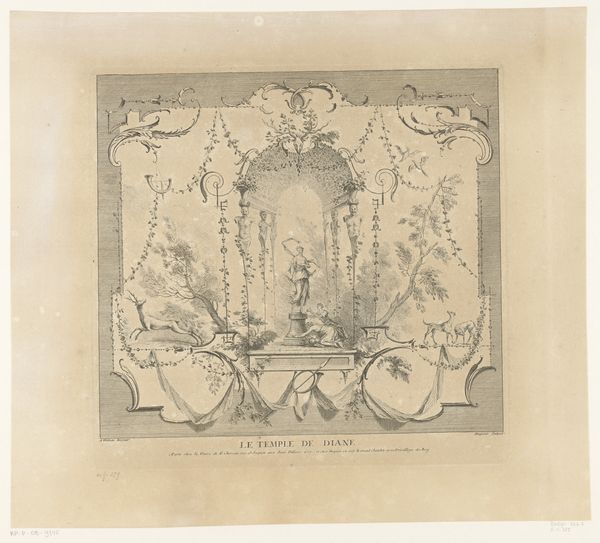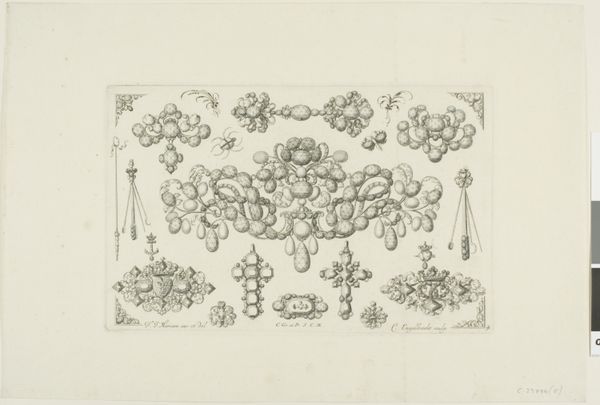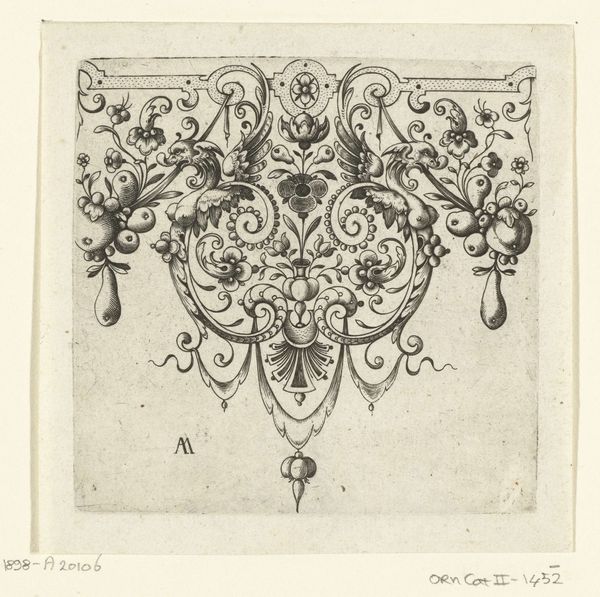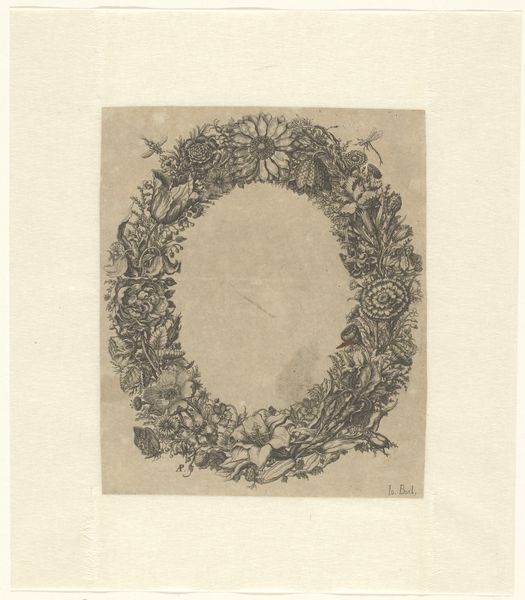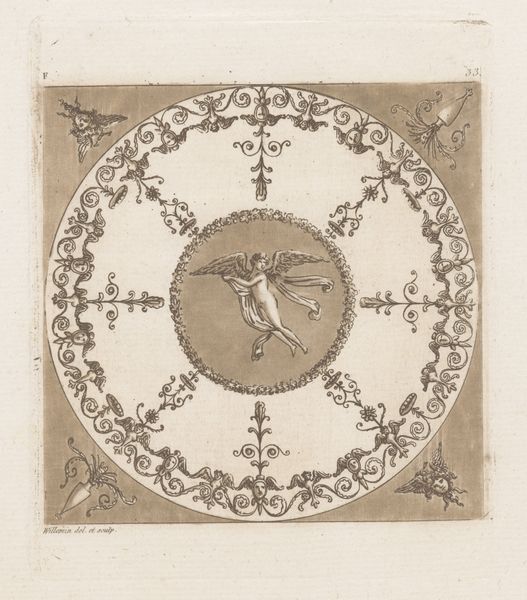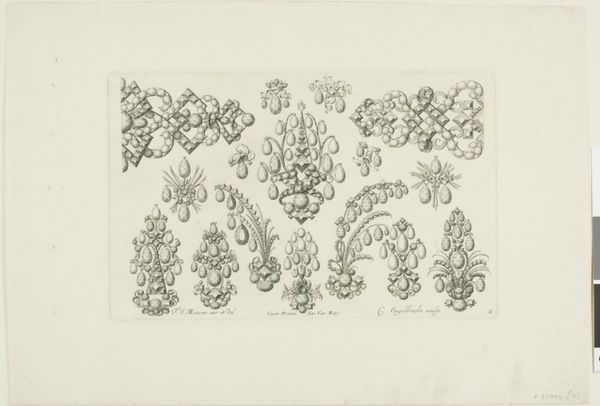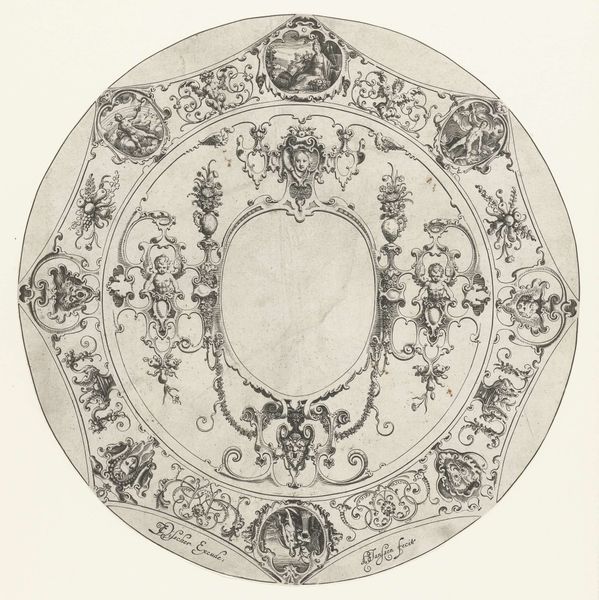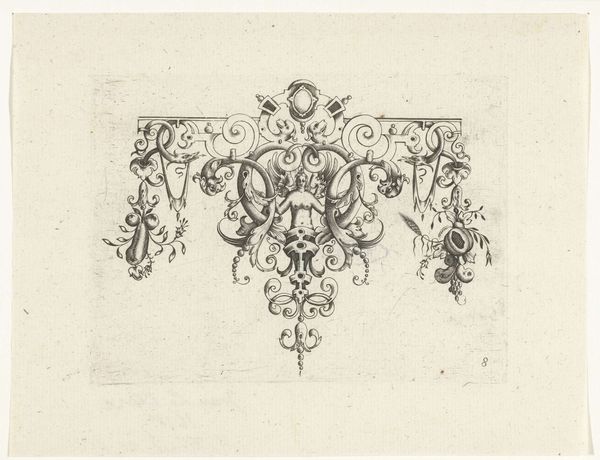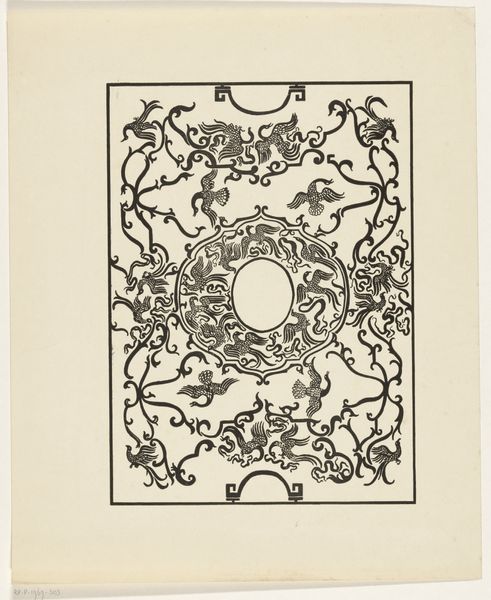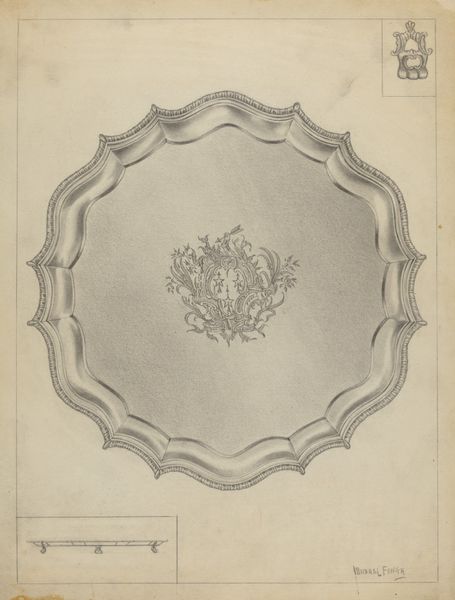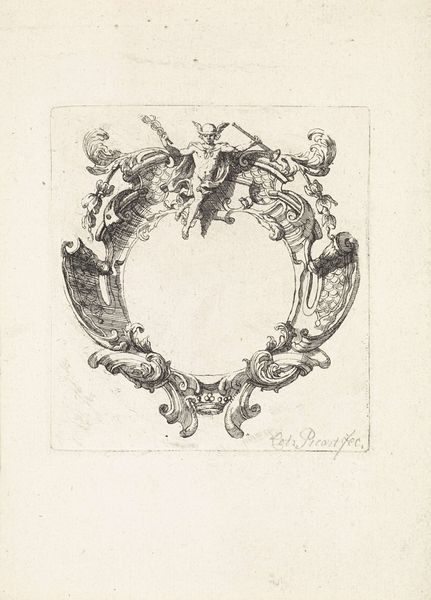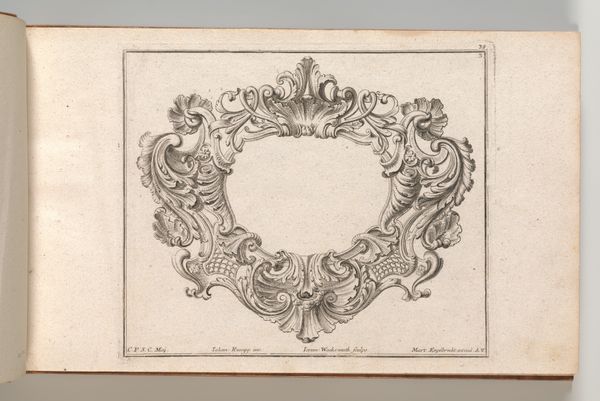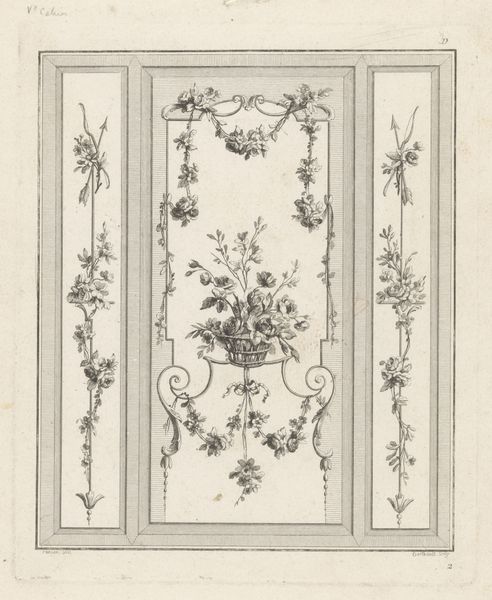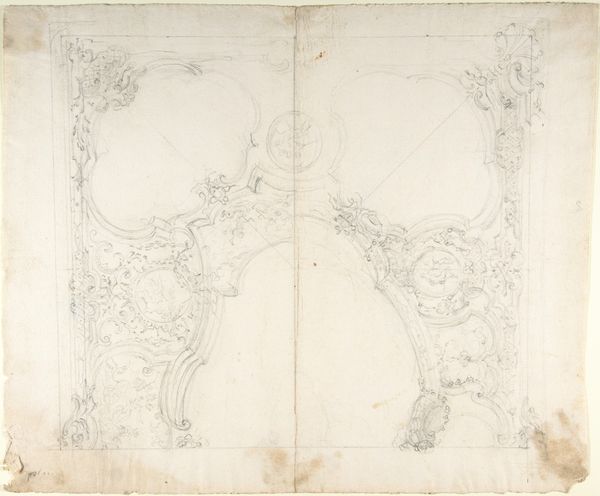
Design for a Rococo Cartouche with Putti and Monkeys 1740 - 1808
0:00
0:00
Dimensions: 6 7/8 x 6 9/16 in. (17.5 x 16.6 cm)
Copyright: Public Domain
Curator: What strikes me immediately about this drawing, "Design for a Rococo Cartouche with Putti and Monkeys" by Clément Pierre Marillier, made sometime between 1740 and 1808, is how playful it feels, even now. It's all curlicues and mischievous energy. Editor: It’s frivolous in the best way. A momentary escape—the ornamental border practically vibrates. Like powdered wigs and courtly whispers, or rather, a celebration in etching. It seems destined to frame something absurdly important. Curator: Precisely! This embodies the Rococo style, which was largely about creating visually delightful spaces. Marillier was creating a proposition, here—a sketch of a potential ornament. The putti and monkeys were popular motifs that reflected the era’s taste for lighthearted and often irreverent imagery. Editor: Those little monkeys! They are rendered so delicately, it almost reads as satire, you know? Like, here are these almost-human creatures frolicking alongside idealized cherubs. What a perfect commentary on artifice. Curator: That ambiguity is part of the appeal, I think. The drawing itself, created with pen and ink, allows for these subtle tonal variations that convey volume and depth despite the seemingly flat surface. The museum context is crucial: what does it mean for a *design* to be the artwork itself, elevated by display? Editor: The lines sing. Look how they effortlessly suggest weight, even movement. Thinking about the period, and I can just picture some aristocrat commissioning this, adding a touch of whimsical indulgence to their estate. Art making itself visible and accessible. Almost inviting... Curator: ...reflection, perhaps? On the societal frameworks of art and those they historically served. I find these designs vital in teaching how ornament functioned both aesthetically and ideologically within these systems. Editor: Mmm, I'll definitely mull on that… it does ask us: in what grand scheme will a design truly fulfill its promise of enchantment? Curator: It provides fertile ground for further speculation—food for thought, which is what keeps art like this consistently relevant.
Comments
No comments
Be the first to comment and join the conversation on the ultimate creative platform.
